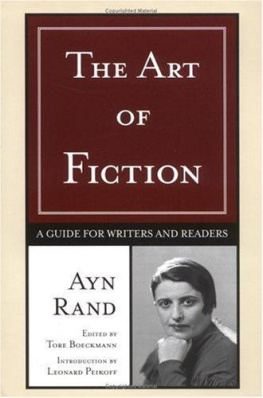
Published in 2017 by Britannica Educational Publishing (a trademark of Encyclopdia Britannica, Inc.) in association with The Rosen Publishing Group, Inc.
29 East 21st Street, New York, NY 10010
Copyright 2017 by Encyclopdia Britannica, Inc. Britannica, Encyclopdia Britannica, and the Thistle logo are registered trademarks of Encyclopdia Britannica, Inc. All rights reserved.
Rosen Publishing materials copyright 2017 The Rosen Publishing Group, Inc. All rights reserved
Distributed exclusively by Rosen Publishing.
To see additional Britannica Educational Publishing titles, go to rosenpublishing.com.
First Edition
Britannica Educational Publishing
J.E. Luebering: Director, Core Reference Group
Anthony L. Green: Editor, Comptons by Britannica
Rosen Publishing
Nicholas Faulkner: Editor
Nelson S: Art Director
Brian Garvey: Designer
Cindy Reiman: Photography Manager
Karen Huang: Photo Researcher
Introduction and supplementary material by Nicki Peter Petrikowski
Library of Congress Cataloging-in-Publication Data
Names: Faulkner, Nicholas, editor.
Title: 101 authors / edited by Nicholas Faulkner.
Other titles: One hundred and one authors
Description: First edition. | New York : Britannica Educational Publishing in association with Rosen Educational Services, 2017. | Series: People you should know | Includes bibliographical references and index.
Identifiers: LCCN 2015051441 | ISBN 9781680484946 (eBook)
Subjects: LCSH: Authors--Biography--Juvenile literature. | Literature--History and criticism--Juvenile literature.
Classification: LCC PN451 .A18 2016 | DDC 809--dc23
LC record available at http://lccn.loc.gov/2015051441
Cover (top left), Darren McCollester/Getty Images/Thinkstock; cover and interior pages border image iStockphoto.com/urbancow
CONTENTS
W riting is one of humanitys most important inventions. People have probably told stories and shared their experiences since the first words were uttered, but those tales are lost to us. Being able to preserve and disseminate information in written form has allowed us to continuously build on the knowledge of our ancestors and benefit from the efforts of past generations. And while a narrated story only reached a small number of listeners, progress in technology and education has allowed written stories to reach a much bigger audience. Some stories are quickly forgotten, whereas others captivate millions and are held in high regard for a long time, sometimes even centuries.
People You Should Know: 101 Authors collects the biographies of some of the best and most successful writers in history. Miguel de Cervantes, William Shakespeare, Johann Wolfgang von Goethe--the works of these writers are considered to be timeless classics, and the way they explore the human condition makes them as fascinating today as they were when they were written.
With countless genres, themes, and styles to explore, literature can always stay fresh. Authors have strived for realism in their work, minutely describing certain aspects of society, be it the village life of mid-19th century France in Gustave Flauberts Madame Bovary , the descent of Maggie: A Girl of the Streets by Stephen Crane, or the struggles of the poor and the wealthy in the works of John Steinbeck.
Writers are not restricted to stories set in the real world, though, and they often create their own. Influenced by Norse mythology and other legends, J.R.R. Tolkien created a mythology of his own, conceiving a whole world and its inhabitants, their history, and their languages. Generations of readers have relished their excursions to Middle Earth, just as millions of children have happily visited Narnia, a creation of Tolkiens friend C.S. Lewis. J.K. Rowlings series was so popular that even people who did not read fiction otherwise picked up her books to get to know about Harry Potters adventures in the wondrous world of wizards.
Although fantasy literature is occasionally criticized for being escapist, contrasting the real world with a fictional one can be thought-provoking and rewarding. In Gullivers Travels , Jonathan Swift lets his protagonist visit fantastic lands, the curious inhabitants of which serve as a satire of the human race, and the dystopian tales told by George Orwell and Aldous Huxley ring depressingly true.
Sometimes the ideas of an author even seem to have prophetic qualities, as was the case with Jules Verne. Several of the concepts described in his books, which must have seemed unrealistic at the time, have since become a regular part of our lives. It remains to be seen if the science fiction of Isaac Asimov, who also was a prolific writer of nonfiction, has anticipated things to come.
Be that as it may, one safe prediction is that the works of the authors presented here will continue to captivate their readers.
(b. 1832d. 1888)
B ased on Louisa May Alcotts recollections of her own childhood, Little Women describes the domestic adventures of a New England family of modest means but optimistic outlook. An immediate success when Alcott published it in 1868, the novel remains a classic of childrens literature. Alcott wrote during a period of great American literary creativity known as the American Renaissance, and she was influenced in her writing by Transcendentalist ideas. Her father, Amos Bronson Alcott, was a teacher, social reformer, and Transcendental philosopher as well as a close friend of Ralph Waldo Emersons.
Louisa May Alcott was born in Germantown, Pennsylvania, on November 29, 1832. She grew up in Boston and Concord, Massachusetts, in the company of Emerson, Henry David Thoreau, and Theodore Parker, a Unitarian preacher and abolitionist. The Alcott family was always poor or in debt, until Louisa became a successful writer as an adult and supported the family. While she was a child, her father established a series of schools for children. His conversational method of teaching was far in advance of his time and won him few pupils. It was, however, very successful with Louisa. She began to write poems and stories, and by age 15 she was writing and producing amateur theatricals. Alcott published some of her stories under the name A.M. Barnard; these lurid and violent thrillers were unusual in their depictions of women as strong, self-reliant, and imaginative. By 1860 her verses and stories were appearing in the Atlantic Monthly .

Louisa May Alcott, portrait by George Healy.
In 1862, during the American Civil War, Louisa Alcott served as a nurse in the Union Army hospital at Georgetownnow part of Washington, D.C. She contracted typhoid from unsanitary hospital conditions and was sent home. She was never completely well again. Her letters home telling of her hospital experiences were published in 1863 under the title Hospital Sketches and brought her $2,000. With this money she made her first trip to Europe.
On her return home, Alcott began Little Women , a realistic but wholesome picture of family life with which younger readers could easily identify. The book made her famous and enabled her to pay off all the family debts. In 1870 Alcott took a long tour of Europe with her sister May. In Rome, Italy, she wrote Little Men (1871).
Alcotts other works include An Old-Fashioned Girl (1870), Eight Cousins (1875), Under the Lilacs (1878), and Jos Boys (1886). The publication of some of her lesser-known works late in the 20th century aroused renewed critical interest in her adult fiction, such as the Gothic novels A Modern Mephistopheles (1877; republished 1987) and A Long Fatal Love Chase (first published 1995).













![Matt Cardin - Horror Literature Through History [2 Volumes]: An Encyclopedia of the Stories That Speak to Our Deepest Fears](/uploads/posts/book/119545/thumbs/matt-cardin-horror-literature-through-history-2.jpg)



